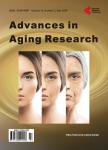New antioxidant SkQ1 is an effective protector of rat eye retinal pigment epithelium and choroid under conditions of long-term organotypic cultivation
New antioxidant SkQ1 is an effective protector of rat eye retinal pigment epithelium and choroid under conditions of long-term organotypic cultivation作者机构:Belozersky Institute of Physico-Chemical Biology Lomonosov Moscow State University Moscow Russia Institute of Mitoengineering Lomonosov Moscow State University Moscow Russia Kol’tsov Institute of Developmental Biology Russian Academy of Sciences Moscow Russia
出 版 物:《Advances in Aging Research》 (老年问题研究(英文))
年 卷 期:2012年第1卷第2期
页 面:31-37页
学科分类:1002[医学-临床医学] 100214[医学-肿瘤学] 10[医学]
主 题:Rat Eye Retinal Pigment Epithelium Choroid Organotypic Culturing in Vitro AMD Remodeling Antioxidant SkQ1 Cell Behavior Cell Death
摘 要:Cells have intrinsic mechanisms for cleaning harmful oxidants represented mainly by reactive oxygen species (ROS). Despite the antioxidant defense, ROS can cause serious damage to the retina that with age leads to various eye diseases and even blindness. Among numerous cell sites of ROS generation, mitochondrial electron transport is of crucial importance. Recently, for the purpose of cleaning ROS in the mitochondrial matrix, powerful mitochondria- targeted antioxidant “SkQ1 has been invented. We studied SkQ1 effects upon tissues of rat posterior eye cup that consisted: retinal pigment epithelium (RPE) ? choroidal coat ? scleral coat. The eye cups were isolated from the eyes of adult albino rats and cultivated in rotary tissue culture system in the presence of 20 nM SkQ1 or without this compound. After 7 days - 1 month in vitro eye cup samples were studied by immunohistochemistry, routine histology, morphometry, and digital image analysis. We have found that under chosen, “in vitro like in vivo conditions 20 nM SkQ1 effectively reduced cell death in RPE and choroid, protected RPE from disintegration caused by cell phenotypic transformation and withdrawal from the layer, suppressed transmigration of choroidal coat cells. In the ex vivo model we used degenerative processes were more pronounced in the eye cup center where SkQ1 effect was most vivid. All this give us hopes for effectiveness of SkQ1 treatment of retinal central part that is very susceptible to light-induced over-oxidation injury and mostly suffering in many age-related diseases, AMD, in particular.



